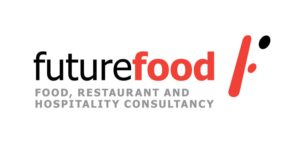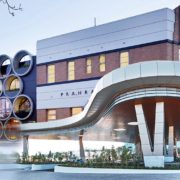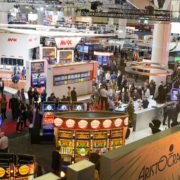F&B ARCHITECTURE & DESIGN – FRONT OF HOUSE
Article and images courtesy of Francis Loughran, Food and Beverage Director of Future Food, Melbourne.
Front of house (FOH) design is mostly about creating a space that customers can engage with and feel comfortable in, meaning it is more to do with the psychology of your customers rather than the actual food. FOH design has the power to convey your offer’s message within the first glance as well as ensure a customer feels welcome in the space, can move through the space with ease and purchase everything they might want and need from their visit before exiting the outlet feeling comfortable and content.
Here are our four key points Future Foods always consider for FOH design when they work collaboratively with a project’s architects.
-
FIRST IMPRESSIONS ARE VISUAL
At the forefront of FOH design needs to be the question, “what do you want your customer to feel when they look at your restaurant or store?”. The eyes are the first sense to be stimulated, well before a customer smells and tastes the food which means that a FOH needs to be designed well to ensure the customer can gather all they need to know to make them want to see what the offer is all about. Design aspects such as layout, sight lines, lighting integration and the colour scheme all play into consumer first impressions therefore, they need to be designed into the spaces by the project design team.

-
SPACE FOR CUSTOMER COMFORT
You don’t want a customer to feel uncomfortable in the FOH space you’ve created which can happen if you don’t allow enough space for queues to form during high-volume trade periods let alone, standard trade periods. The space designed for queuing also needs to not impact on diners who are sitting in as having queues form around you while you’re enjoying your meal is not part of the desired experience. Architectural master planning has the ability to ensure that there is enough space for everyone including longer queues which are typical of quick service restaurant, or order and pick up areas.

-
FUNCTIONALITY AND EFFICIENCY
Functionality comes down to ensuring there is both enough space and that the space is well equipped. By considering functionality throughout every aspect of FOH design, you can ensure the space responds well to your customers. The function of a QSR (quick service restaurant) is to provide high quality food service, quickly. The design can assist this function by creating a FOH space which directs the customer through the restaurant or cafe, ensuring they can collect everything they might want and need along the way. They enter the space, can view the menu with ease, move past opportunities to add to their order (i.e. drinks, snacks, grab and go foods), approach the payment touchpoint and then wait conveniently for their order before collecting their food and moving on. This is known as the customer purchase path and is a wonderful insight which can be used to inform design as well as maximise sales.
-
MATERIALITY
The materials the architects use in the FOH area should be considered as an integral part of conveying your brand’s message. If you think about an organic salad bar that offers seasonal and fresh meals, you instantly picture natural materials that align with this type of food. Materials such as wood and earthy stone would be very appropriate in a FOH space such as this however, would not be appropriate for the New York-style burger bar that wants to instill a different message.

Future Food – Food, Restaurant & Hospitality Consultancy
Suite 19B, 75 Lorimer Street, Docklands VIC 3008 Australia
T: +61 3 9646 5177
F: +61 3 9646 3767












